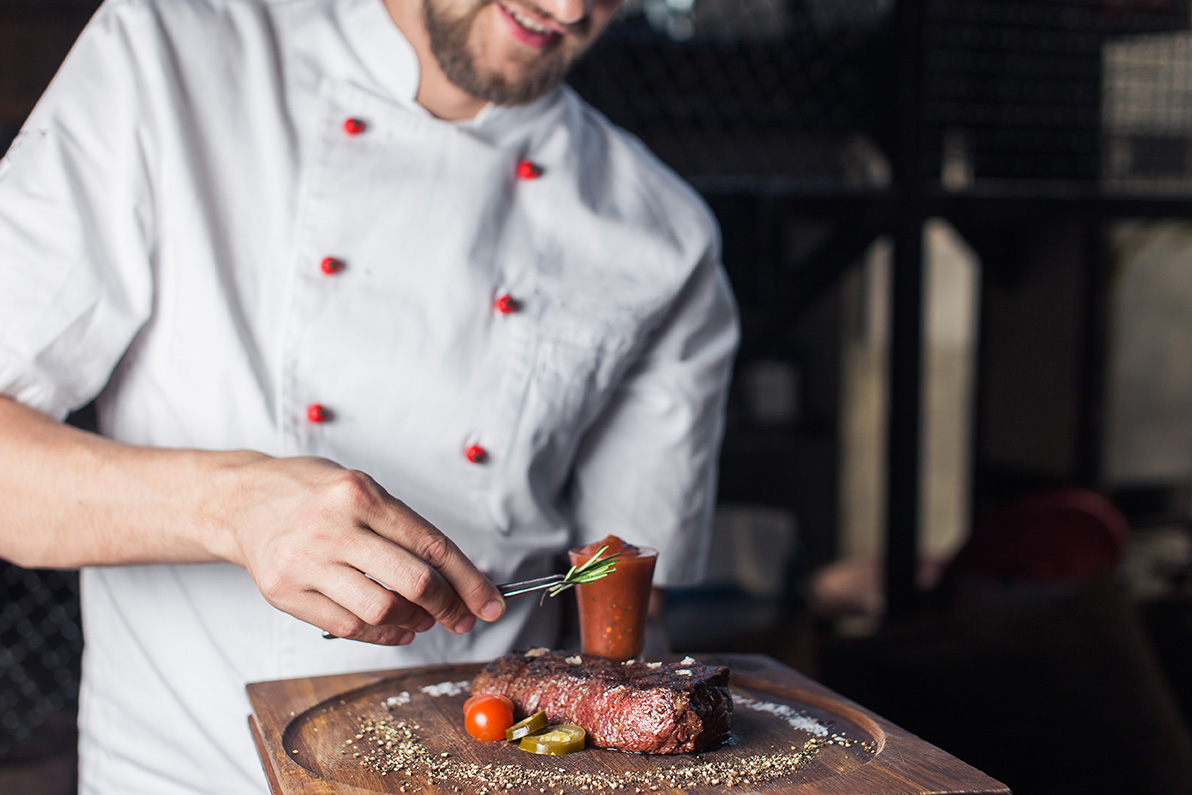Temperature Abuse: Tales from the Dirty Kitchen

Using Technology in Restaurant Operations to Improve Your Business
August 13, 2018
7 Ways to Take Control of Restaurant Food Safety in 2020
December 30, 2018Temperature Abuse: Tales from the Dirty Kitchen
Temperature abuse is one of the most common problems in restaurant food safety. A recent outbreak at Chipotle has brought this issue to attention. This happens when TCS (Temperature Controlled for Safety) foods are held in the “danger zone” for too long. The danger zone for food is between 41 and 135 degrees Fahrenheit, which is the range that creates an environment for bacteria to grow. It’s often a challenge to keep these foods at the proper temperature due to inadequate equipment, hot cook lines, improper training and lack of an effective plan to combat this common problem.
In the case of one Chipotle location in Ohio, they allegedly made 650 people sick with a bacterium called Clostridium perfringens. This particular bacterium becomes a threat when meats and cooked foods are improperly cooled or held at the wrong temperature for an extended period of time. This wasn’t an isolated incident at this Chipotle location. Recent health inspections identified temperatures as a problem multiple times. Management at this location knew this was an issue and failed to act on the warnings until it was too late. Based on inspection history, it was only a matter of time until this store was going to make people sick.
How Could Temperature Abuse Be Avoided?
Equipment Maintenance: Cold-holding equipment needs a lot of upkeep to work properly. It can also be overloaded easily, causing a catastrophic failure with too much food or hot food. Keep all coolers on a regular maintenance cycle to keep them working efficiently and effectively. Only put in the amount of food that the equipment can handle.
Line Checks: All cold-holding equipment needs to be checked multiple times a day. Both ambient and product temperatures should be tested with thermometers during these times:
- First thing in the morning
- Right before lunch service
- Between lunch and dinner
- After dinner
This will allow staff to identify problems and correct them in a timely manner. There are many options for using a temperature data log, such as pen and paper, automatic systems and manual/automatic systems. For the pen and paper option, Food Safety Nation has a resource you can download for free.
Keep the Line Cool: Most cook lines are extremely hot. This causes problems for worker safety and also food temperatures. Using effective air conditioning not only keeps your cooks happy but also assists your cold-holding equipment with keeping food cold.
Limit Prep Time on TCS Foods: Food prep procedures should reflect the importance of limiting prep time on TCS foods to make sure they aren’t held out of temperature for long periods of time.
Proper Cooling: Cooling hot foods and recently prepped foods before service is very important. Most cold-holding tables on the line don’t have the capacity to cool foods and shouldn’t be used for anything other than keeping cold food cold. Leave cooling to freezers and walk-ins that have the capacity to cool quickly. Be sure to document all cooling activities with a daily log.
Training: All restaurant employees should be trained on the importance of controlling the temperature of food. They should know which ones should be cold, hot, or allowed to be left out of temperature control.
Verification: There should be follow-up from restaurant management or other means to ensure that the above practices are being followed. Logs should be reviewed, repair personnel called, and appropriate corrective action taken when needed. A third-party auditor can be very helpful with verification. They can do line checks with staff for training, check the previous day’s log sheets for accuracy and make recommendations for improvement.
Temperature Abuse Risks and Consequences
The biggest risk to improperly managing temperatures in a restaurant is foodborne illness. The risk can be minimized or avoided all together by following the above steps. A restaurant that doesn’t manage temperatures could suffer the consequences of losing customers, costly lawsuits, closures and a bad reputation that may be unrecoverable.
Conclusion
In Chipotle’s case, the consequence was Clostridium perfringens infecting 650 of its customers. This bacterium grows in meats and cooked foods held in the danger zone for too long. Clearly, Chipotle didn’t have a plan in place to manage temperatures since it was previously noted on health inspections. This shows a failure of management all the way to the corporate office, which did nothing to heed the warning of health inspectors who identified and documented the problem. Temperature abuse is just one more area restaurants need to closely manage to avoid a crisis or imminent health hazard.
To control temperature abuse in your restaurant, make a plan and ensure it’s executed and verified by management or a third-party auditor.








